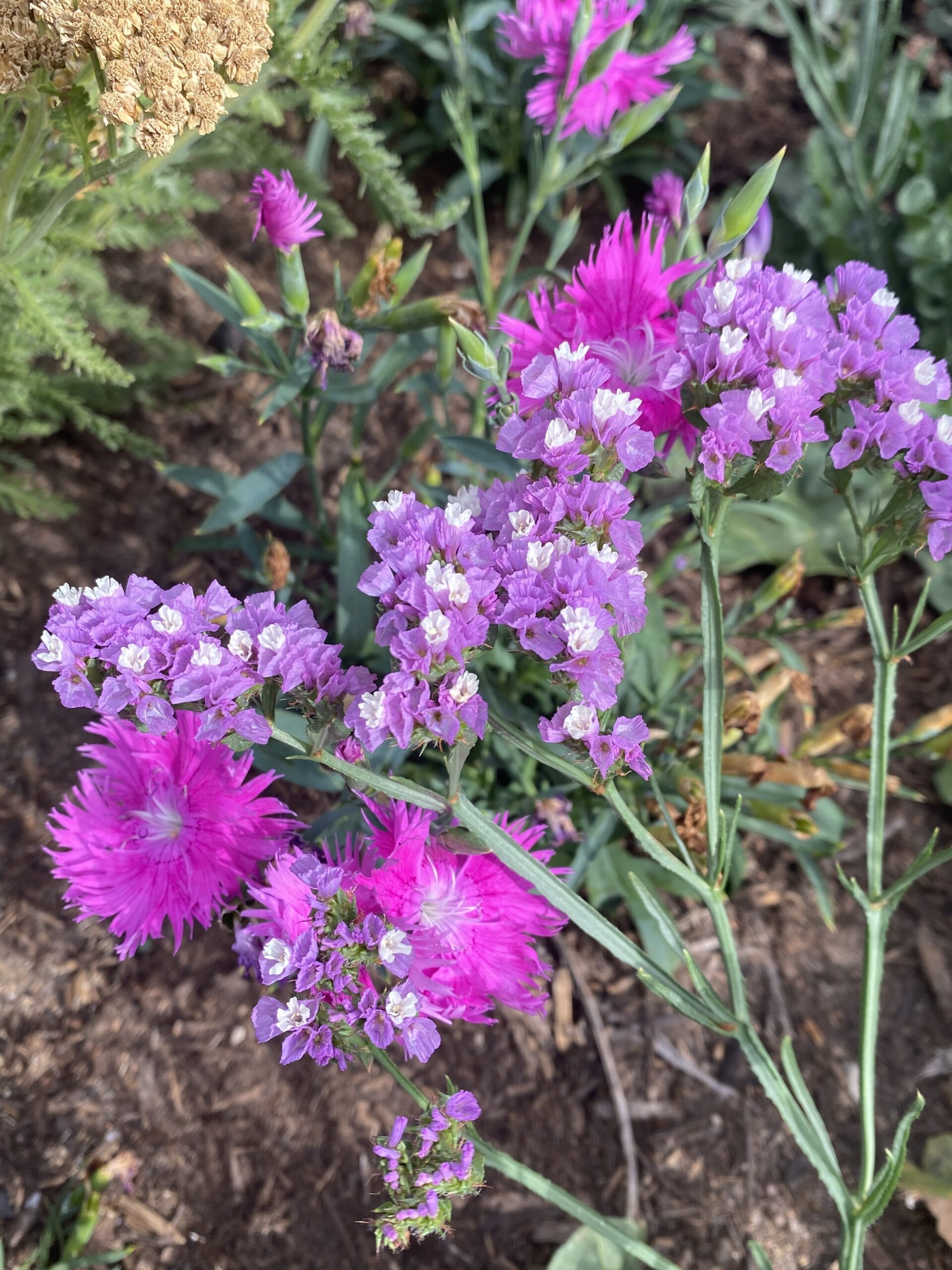Before the Event:
Gather Materials
- Seeds (available for free through DUG’s Community Seed Distribution—check DUG’s website dug.org/community-seed-distribution/ for more details)
- Seedlings (for crops that benefit from transplanting, such as tomatoes, peppers, kale, and herbs)
- Compost (from your garden’s compost pile or a local provider, like A1 Organics)
- Straw, leaves, or grass clippings for mulching
- Garden tools (hand trowels, rakes, watering cans, hoses)
- Markers and labels for planted rows
Determine Timing by What to Plant from Seed vs. Seedling:
March-April, Cool Season:
- Direct Seed: Peas, radishes, lettuce, spinach, carrots, beets, kale, chard
- From Seedlings: Kale, chard, broccoli, cabbage, cauliflower, parsley and cilantro
May-June, Warm Season:
- Direct Seed: Beans, squash, cucumbers, corn, sunflowers
- From Seedlings: Tomatoes, peppers, eggplants, kale, chard, broccoli, cabbage, and cauliflower and herbs like basil, parsley, cilantro
Encourage Community Participation
- Include the community: Let gardeners know about the event and invite them to bring seeds, tools, or ideas to share. Putting up a flyer, sharing about it on DUG Online, sending a text message to a group thread or activating a phone tree are all great ways to spread the word!
- Prioritize collective action: Emphasize that this is a chance to both care for individual plots and contribute to the garden as a whole.
- Foster Learning from Each Other: Ask gardeners to share tips and experiences rather than relying on one person to lead.
- Build Connections: Encourage people to check in with their neighbors’ plots and offer help if needed. Get to know you games like guess-who bingo or a scavenger hunt can help break the ice and encourage gardeners to get to know each other.
During the Event:
Step 1: Welcome and Community Check-in
- Invite everyone to introduce themselves and share what they’re excited to grow. If people have brought extra seeds, encourage an informal seed swap!
- Ask if anyone has past experience or tips for seed planting and encourage open sharing.
- Emphasize collaboration, learning from each other, and caring for the soil together.
Step 2: Prepare the Soil
- Clear Debris: Use a rake or hoe to remove weeds and old plant matter. Shake off any soil from removed plants back into the garden bed. Compost healthy plant matter but throw any diseased plant materials into the trash to avoid spread.
- Loosen the Soil: Use a garden fork or trowel to break up compacted soil, ensuring roots can grow easily.
- Add Compost: Spread a 1-inch layer of compost over the soil and gently mix it in with a rake. Compost improves soil health by adding nutrients and retaining moisture.
Step 3: Plant the Seeds
- Read Seed Packets Carefully: Each type of seed has different planting depths and spacing needs.
- Create Furrows: Use a trowel or your finger to make shallow trenches in the soil at the recommended depth.
- Plant Seeds: Drop seeds into the furrow, spacing them according to the packet instructions. Cover lightly with soil and gently pat down.
- Label Rows: Use garden markers or painted rocks to identify what has been planted and the planting date.
Step 4: Transplanting Seedlings
Note: Seedlings that have been grown indoors must be ‘hardened off’ before planting. Seedlings that have not been hardened off are more likely to have stunted growth, be more vulnerable to pests and diseases, or not survive after planting.
To harden off seedlings, on Day 1, place them outdoors in a protected, semi-shady spot for about an hour. Increase outdoor/sun exposure by 1-2 hours each day. By Day 7, your seedlings will be able to withstand strong winds and UV exposure and are ready for planting!
- Choose Healthy Seedlings: Look for plants with strong stems and healthy roots.
- Dig Proper Holes: Use a trowel to dig a hole slightly larger than the seedling’s root ball.
- Gently Remove from Containers: Squeeze the bottom of the pot or loosen roots carefully to avoid damaging them. Save your containers for reuse!
- Plant at the Right Depth: Most seedlings should be planted at the same depth they were growing in their container. Tomatoes can be planted deeper to encourage stronger roots.
- Firm the Soil: Press the soil gently around the base of the seedling to remove air pockets.
Step 5: Water and Mulch
- Water Gently: Use a watering can with a gentle shower setting or a hose with a spray nozzle to moisten the soil without washing away seeds.
- Check Moisture Levels: Soil should be consistently damp but not waterlogged. Encourage participants to check the soil daily and water as needed to keep soil damp.
- Apply Mulch: Spread a thin layer (about 1 inch) of mulch over the soil. This helps retain moisture, suppress weeds, and regulate temperature.
Wrap-Up and Next Steps:
- Get Help Cleaning Up: Many hands make light work. Remind everyone to put away all materials before leaving and help others who might need extra support.
- Encourage Ongoing Care: Ask gardeners to check on their plots and shared spaces regularly. A garden that has many caretakers encourages a sense of collective wisdom.
- Share Upcoming Events: Let gardeners know about DUG’s pay-what-you-can workshops, free seed distribution, and May plant sale. Encourage them to join DUG’s online gardening community at community.dug.org.
- Make a Plan: Keep the energy and excitement up by planning a future workday to weed and care for young seedlings

